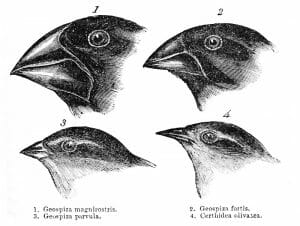Biogeography Definition
Biogeography refers to the distribution of various species and ecosystems geographically and throughout geological time and space. Biogeography is often studied in the context of ecological and historical factors which have shaped the geographical distribution of organisms over time. Specifically, species vary geographically based on latitude, habitat, segregation (e.g., islands), and elevation. The subdisciplines of biogeography include zoogeography and phytogeography, which involve the distribution of animals and plants, respectively.
Types of Biogeography
There are three main fields of biogeography: 1) historical, 2) ecological, and 3) conservation biogeography. Each addresses the distribution of species from a different perspective. Historical biogeography primarily involves animal distributions from an evolutionary perspective. Studies of historical biogeography involve the investigation of phylogenic distributions over time. Ecological biogeography refers to the study of the contributing factors for the global distribution of plant and animal species. Some examples of ecological factors that are commonly studied include climate, habitat, and primary productivity (the rate at which the plants in a particular ecosystem produce the net chemical energy). Moreover, ecological biogeography differs from historical biogeography in that it involves the short-term distribution of various organisms, rather than the long-term changes over evolutionary periods. Conservation biogeography seeks to effectively manage the current level of biodiversity throughout the world by providing policymakers with data and potential concerns regarding conservation biology.
How Does Biogeography Support Evolution?
Biogeography provides evidence of evolution through the comparison of similar species with minor differences that originated due to adaptations to their respective environments. Over time, the Earth’s continents have separated, drifted apart, and collided, resulting in the creation of novel climates and habitats. As species adapted to these conditions, members of the same species that had been separated geographically diverge, resulting in the eventual formation of distinct species. This knowledge is important, as by understanding how adaptations occurred in response to changing environments in the past, we can apply this knowledge to the future.
Example: The Galapagos Islands
One of the most famous examples of biodiversity in support of evolution is Charles Darwin’s study of finches on the Galapagos Islands, which resulted in his book On the Origin of Species. Darwin noted that the finches on the mainland of South America were similar to those located on the Galapagos Islands; however, the shape of the bills differed depending on the type of food available on each island. The islands had once been a part of the South American mainland, but the two land masses were subsequently separated and drifted apart. The result was the creation of novel habitats and food sources available for the species residing in each of these regions. Therefore, each finch species had adapted to the local environment through the selection of alleles which promoted survival, eventually resulting in speciation. Islands are excellent for the study of biogeography because they consist of small ecosystems that can easily be compared to those of the mainland and other nearby regions. Moreover, since they are an isolated region, invasive species and the associated consequences for other organisms within the ecosystem can be readily studied. By studying such changes over time, the evolution of distinct species and ecosystems becomes apparent.

Quiz
1. Darwin’s study of the finches in the Galapagos Islands is an example of what type of biogeography?
A. Conservation
B. Historical
C. Ecological
2. Conservation biogeography involves the study of:
A. Climate change
B. Deforestation
C. Invasive species
D. A and C only
E. All of the above
References
- Lecturer et al. (2016). An Introduction to Biogeography and Climate Change. International Journal of Research and Scientific Innovation (IJRSI). 3(6): p. 136.
- National Research Council (US) Panel on Effects of Past Global Change on Life. (1995). Effects of Past Global Change on Life. National Academies Press (US): Washington (DC). Chapter 1.
